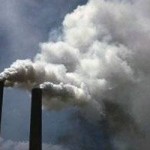 Nairobi – The environmental changes that have swept the planet over the last twenty years are spotlighted in a new compilation of statistical data by the UN Environment Programme (UNEP), released on November 1 in a report entitled “Keeping Track of our Changing Environment: From Rio to Rio+20”.
Nairobi – The environmental changes that have swept the planet over the last twenty years are spotlighted in a new compilation of statistical data by the UN Environment Programme (UNEP), released on November 1 in a report entitled “Keeping Track of our Changing Environment: From Rio to Rio+20”.
The report is produced as part of UNEP’s “Global Environmental Outlook-5” (GEO -5) Series, the UN’s most authoritative assessment of the state, trends and outlook of the global environment. The full GEO-5 report will be launched next May, one month ahead of the Rio+20 Conference taking place in Brazil.
UN Under-Secretary General and UNEP Executive Director, Achim Steiner, said, “Today marks the deadline for governments, business and civil society to submit their submissions for how Rio+20 can deliver a transformational outcome in terms of accelerating and scaling-up sustainable development for now seven billion people.”
“The indicator report gets us all back to basics, underlining the rapid build-up of greenhouse gases to the erosion of biodiversity and the 40 per cent increase in the use of natural resources-faster than global population growth. But the report also underlines how, when the world decides to act, it can dramatically alter the trajectory of hazardous trends that threaten human well-being-action to phase-out ozone damaging chemicals being a spirited and powerful example,” he added.
“Rio+20, under the two themes of a Green Economy in the context of sustainable development and poverty eradication and an institutional framework for sustainable development, can with the requisite level of leadership trigger the necessary switches that may ensure that the balance of negative versus positive trends moves from the red into the black and that the Right to Development is enjoyed by the many rather than the few,” said Mr. Steiner.
Through data, graphics and satellite images, the UNEP report offers wide-ranging information on a number of key issues:
On Population
- As the world’s population reaches 7 billion, urban population has grown by 45 per cent since 1992.
- Yet the percentage of slum dwellers has dropped from 46 per cent in 1990 to a third in 2010, thanks to improved housing and sanitation.
- The number of megacities with at least 10 million people has grown from 10 in 1992 to 21 last year – a 110 per cent increase.
- 1.4 billion people globally have no access to reliable electricity or the power grid.
Climate Change
- Global C02 emissions continue to rise due to increasing use of fossil fuels, with 80 per cent of global emissions coming from just 19 countries.
- The amount of CO2 per US $ 1 GDP has dropped by 23 per cent since 1992 underlining that some decoupling of economic growth from resource use is occurring.
- Nearly all mountain glaciers around the world are retreating and getting thinner, with severe impacts on the environment and human well-being.
- Diminishing glaciers not only influence current sea-level rise, but also threaten the well-being of approximately one-sixth of the world’s population.
- Sea levels have been rising at an average rate of about 2.5 mm per year since 1992.
Energy
- Tracking energy trends since 1992, the report indicates that the contribution of renewable energy (including biomass) to the global energy supply stood at an estimated 16 per cent in 2010.
- Solar and wind energy accounted for only 0.3 per cent of the total global energy. Increased recognition of the need to move towards low carbon, resource efficient energy solutions can be seen in the 540 per cent increase in investments in sustainable energy between 2004 and 2010.
- Due to the decreasing prices of the technologies and adoption of new policies, growth in biodiesel as a renewable energy source has jumped 300,000 per cent, use of solar energy has increased by nearly 30,000 per cent, wind by 6,000 per cent and biofuels by 3,500 per cent.
Resource Efficiency
- The global use of natural resources rose by over 40 per cent from 1992 to 2005. The report warns that unless concerted and rapid action is taken to curb and decouple resource depletion from economic growth, human activities may destroy the very environment that supports economies and sustains life.
Forests
- Despite the net reforestation now seen in Europe, North America and Asia Pacific, ongoing forest loss in Africa and Latin America and the Caribbean means that global forest area has decreased by 300 million hectares since 1990.
- The annual 20 per cent rise in the number of forests receiving certificates for sustainable forestry practices shows that consumers are exerting influence on timber production. However, only around 10 per cent of global forests are under certified sustainable management.
- A growing percentage of the world’s forests are those that have been replanted – an area equaling the size of a country like Tanzania.
Food Security and Land Use
- Food production has risen by 45 per cent since 1992. These increased yields are heavily reliant on the use of fertilizers, which as well as enriching soil fertility, can also have a negative impact on the environment, such algal blooms in inland and marine waters.
- Land used for organic farming is growing at an annual rate of 13 per cent.
Drinking Water
- The world will meet, or even exceed, the Millennium Development Goals target on access to drinking water; indicating that by 2015, nearly 90 per cent of the population in developing regions will have access to improved sources of drinking water, up from 77 per cent in 1990.













